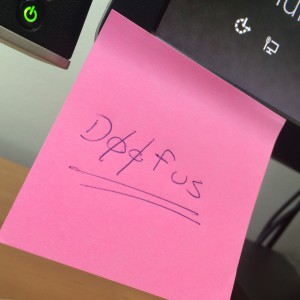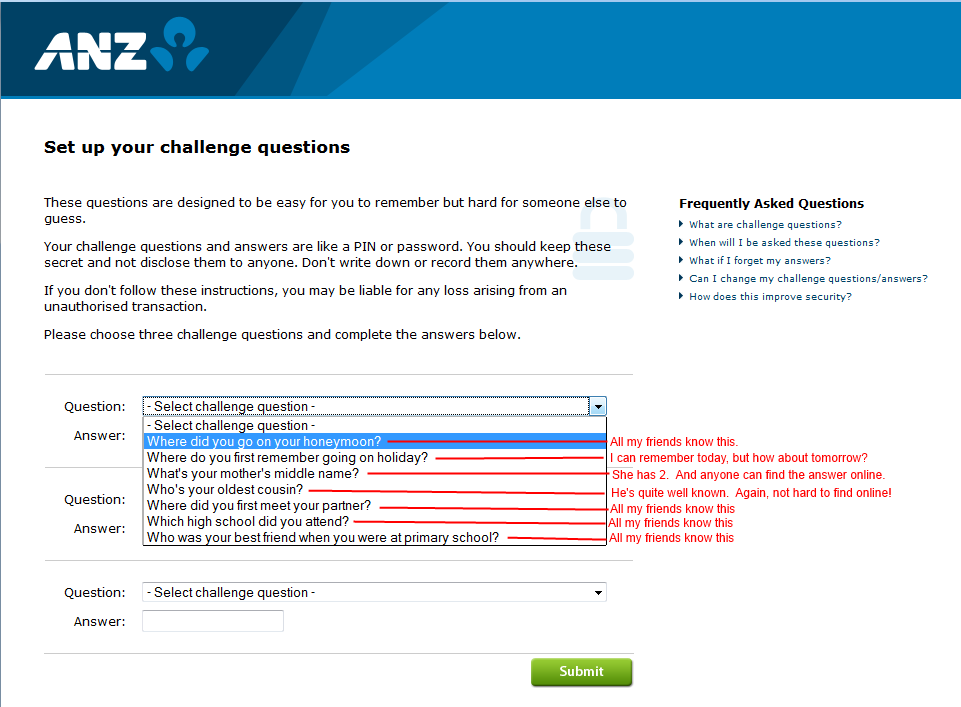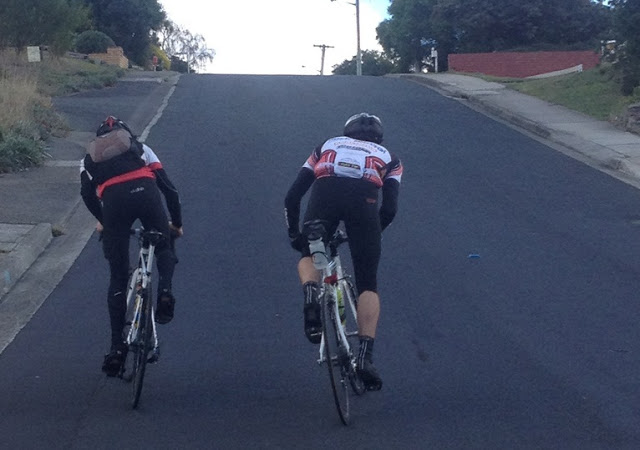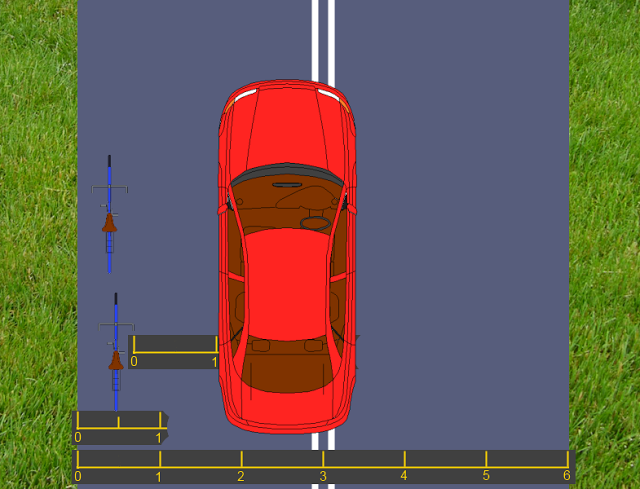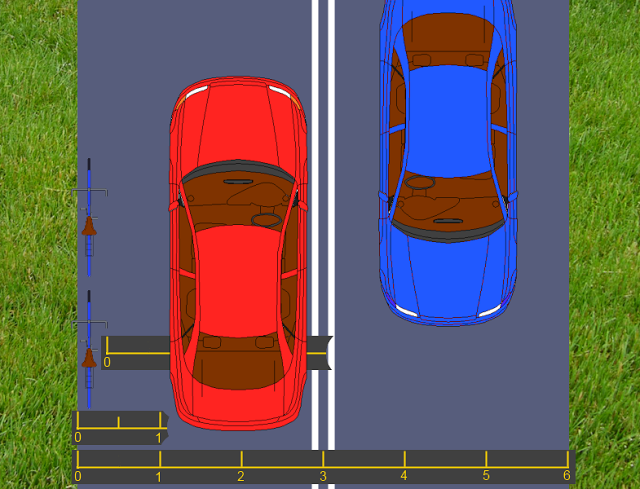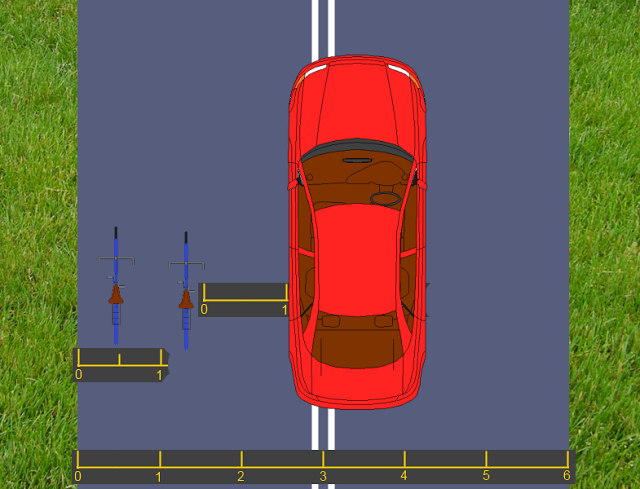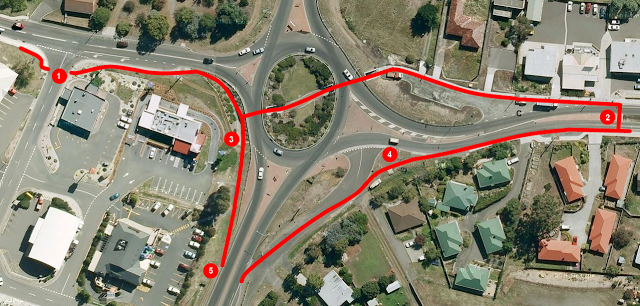After receiving quite a few positive comments, online and offline, about my previous blog post on the Taroona cycle lanes, I thought I might explore some of the cycling infrastructure in Kingston. I have focused on the on-road cycle lanes, but Kingston also has a bike path or two that are good recreational routes, especially for families, and more are under construction.
I would describe the quality of bicycle lanes in Kingston as good, and the newer lanes in the centre of town are of high quality. The Kingborough Council also has the distinction of being the first council in Tasmania to install a bike lane, on the Channel Highway. The Kingborough Council is also in the process of reconstructing roads in the town centre, which I believe will include bicycle lanes.
If I was to pick one problem with the Kingborough bicycle infrastructure, it is that most of the lanes end abruptly on very busy roads or roundabouts. This problem is certainly not unique to Kingston — I saw the same issue many times in Melbourne, for instance.
On with the tour! The map below shows the approximate locations of the photos. In most photos I will pick on an issue, quite unfairly of course. The on-road bike lanes are also marked in blue.
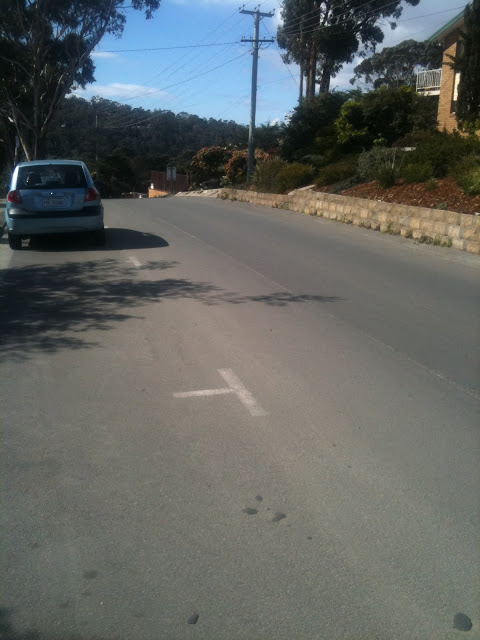 |
| 1. Church St. Minor. Bike lane markings are worn, as cars frequently cross into the lane. |
This is a typical problem with bicycle infrastructure everywhere — the lane markings tend to be driven on, and not just by larger vehicles that have somewhat of a reason. Of course, as the markings get less distinct, the problem is exacerbated. This particular lane is reasonably wide, in a 40 zone, and hence is quite safe, apart from the very steep descent to Beach Rd immediately ahead. The parking spots are not highly used and so dooring is not a huge risk (but always be aware!)
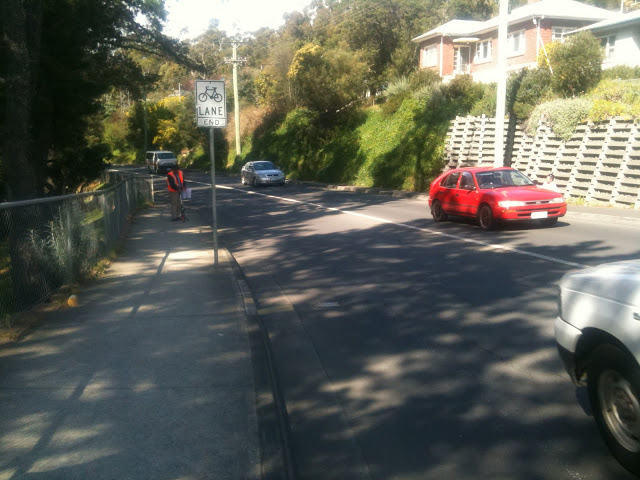 |
| 2. Beach Rd. Moderate. A beautiful bike lane that abruptly ends as the road narrows. |
Again, the lane markings are very worn, but what I wanted to pull out here is how the bicycle lane ends and leaves the cyclist in the middle of a very busy section of road. This is a very popular route for cyclists through to Kingston Beach, and it is disappointing that the lanes which start so well do not continue on at least through to the traffic lights 100m down the road.
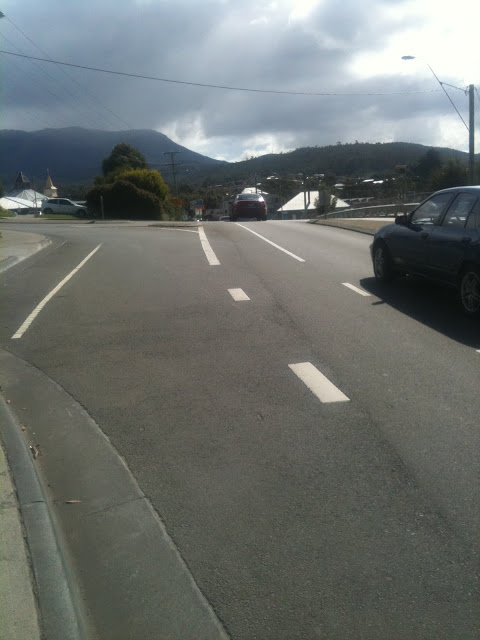 |
| 3. Good Beach Rd / Church St Intersection: Clear and safe bicycle lane |
On the opposite side of the road, this intersection has a clearly marked bike lane. It is wide, clean, and smooth. Great! For extra points (or to get an ‘excellent’ rating), paint the bike lane green.
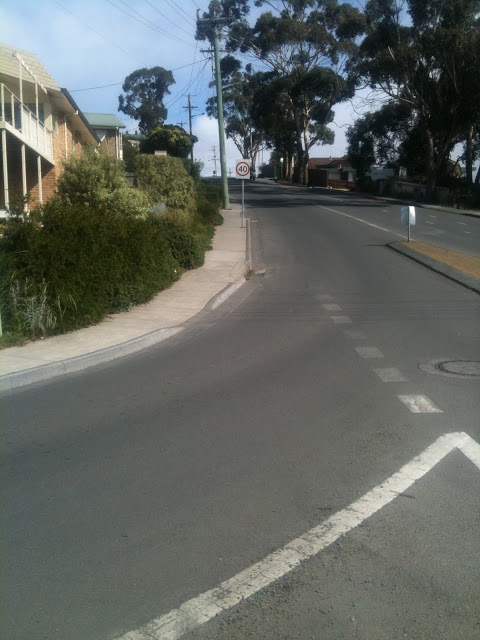 |
| 4. Minor Church St: this up-hill lane has worn markings and is very steep (15%) |
The lane in this picture has worn lane markings, and is not sign posted. The street is also very steep, which would deter some riders.
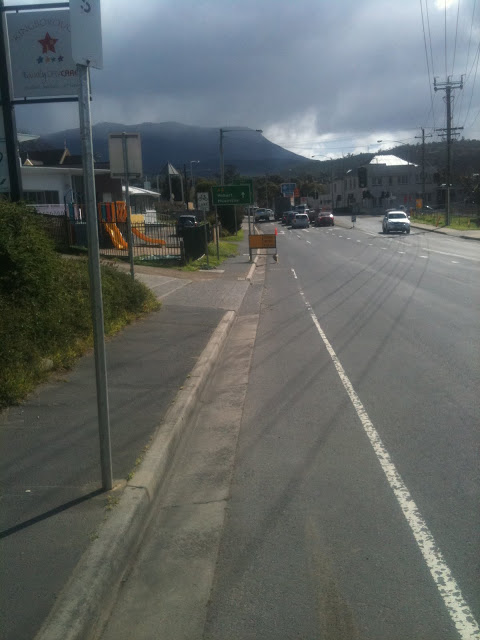 |
| 5. Moderate Beach Rd: Again a situation where the bike lane ends in a busy intersection. |
This bike lane ends at a busy 4 way traffic light. There is no provision for bicycle storage boxes in the intersection. You’ll also note the roadworks signage encroaching right into the middle of the lane. Roadworks signage obstructing bike lanes is a common problem in Hobart — this forces the cyclist to merge into the traffic lane.
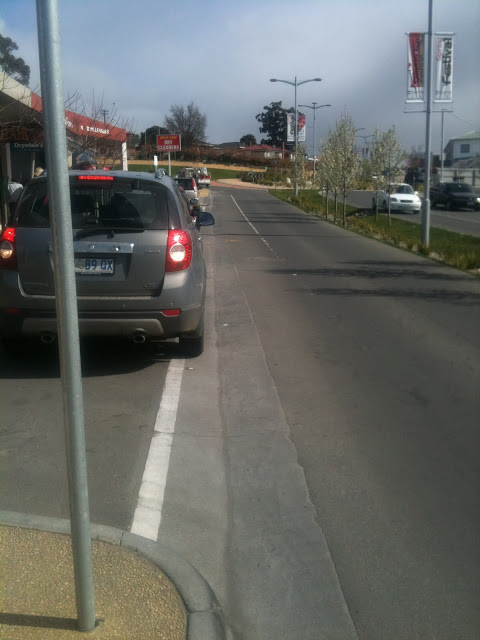 |
| 6. Minor Channel Highway: Good but isolated bicycle lane |
This bike lane is wide, with sufficient room to negotiate around parked cars; beware of dooring of course. This section of road is also posted at 40km/h, which means that although it is busy, there is a much lower risk of serious accidents. The only real problem is that this section of lane does not extend all the way back through the town centre.
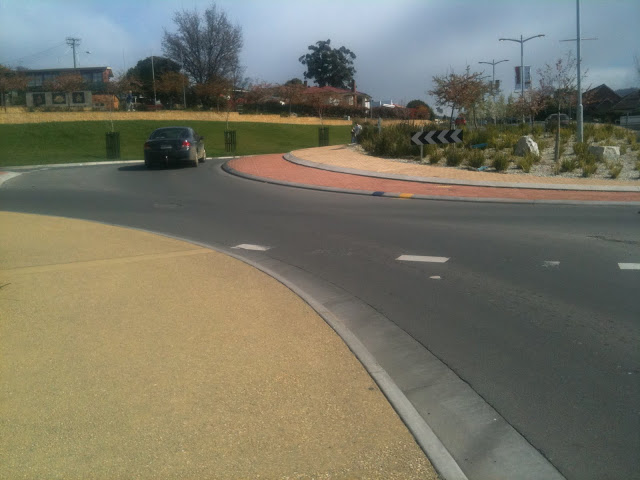 |
| 7. Moderate Channel Highway. No provision for cyclists in the roundabout |
All three major roads entering this roundabout have cycle lanes in both directions. That’s fantastic. But there’s no provision for cyclists at the roundabout, and hence some confusion from drivers who are not sure where the bicycles are going.
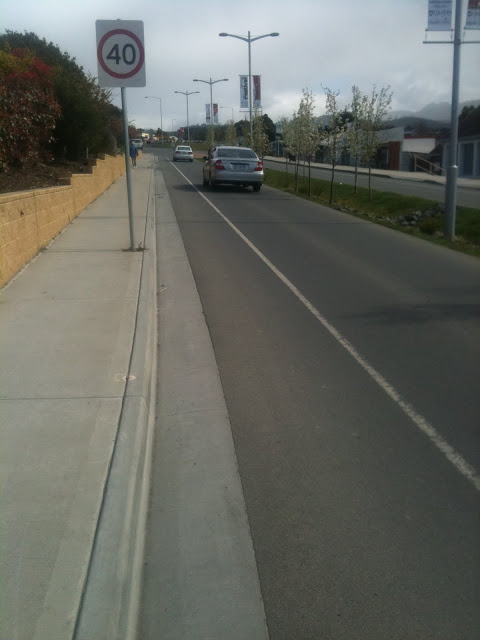 |
| 8. Good Channel Highway. Nice clear section of cycle lane |
The image above shows a section of Channel Highway south of the town centre. Clear, clean and smooth bike lanes in both directions! But…
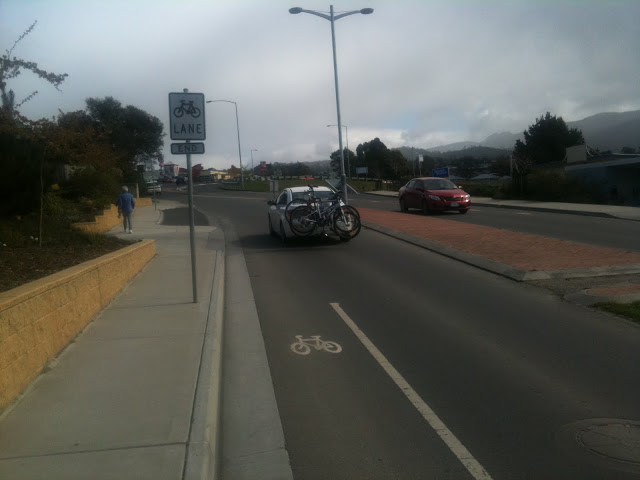 |
| 9. Not so good Channel Highway. The lane ends abruptly on a busy road |
Just 100m further south, this is one area that really needs some work. The roundabout just ahead is extremely busy, is not flat, and you see a lot of rapid entries and exits by car drivers. It’s not a great place to be cycling through. But unfortunately this cycle lane just ends here, with no direction for the poor rider. If you look closely at the base of the light pole, you can see an underpass. That’s where you should be heading (unless, like me, you are silly enough to just ride through the roundabout…) — but there’s no clear way for you to get there.
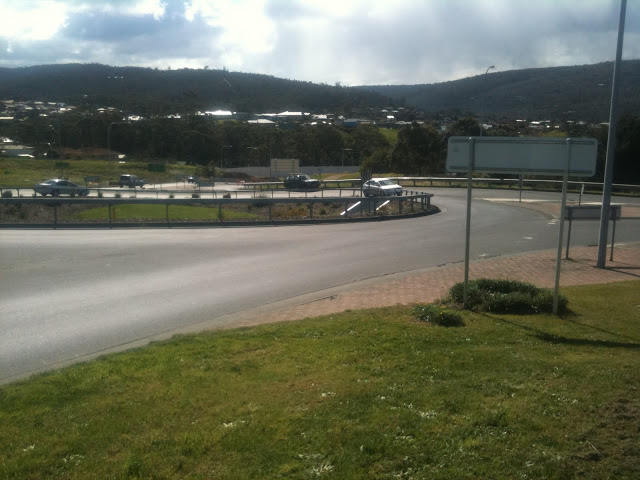 |
| 10. Serious This roundabout is the focal point of nearly all traffic south of the town centre |
Here’s a picture of the roundabout I was just talking about. No provision for cyclists on the roundabout. But if you look closely, you can see the underpass. But again, there is no clarity on how cyclists get from the end of the cycle lane to the underpass.
 |
| 11. Underpass #1 through the roundabout |
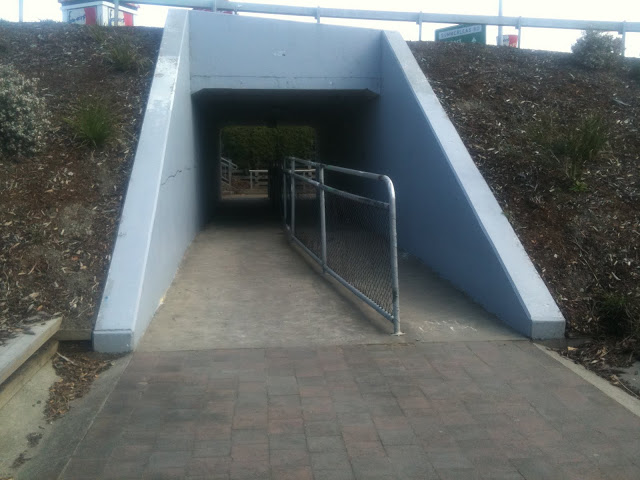 |
| 12. Underpass #2 through the roundabout |
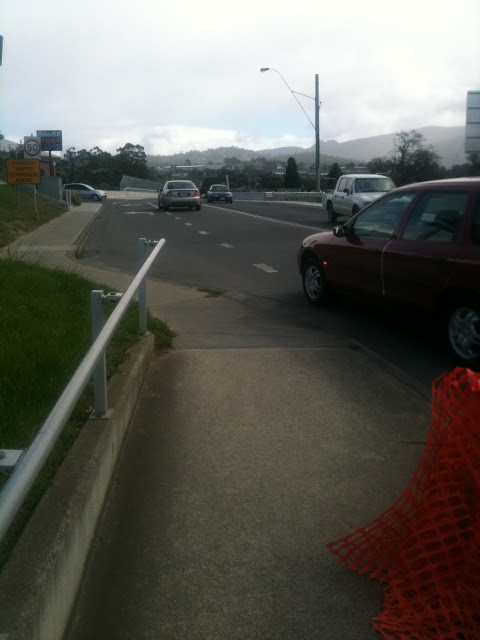 |
| 13. Far side of the roundabout, exiting to Summerleas Rd |
I think most safe bicycle access through this roundabout could be resolved quite easily. The only difficult route really is Summerleas – Channel Highway (Southbound). Even that can be solved with signage and directions.
The image above shows how the cycle infrastructure could be easily improved at the roundabout:
- Add a clearly marked bicycle and pedestrian crossing on Westside Circle, with railings on each side of the road. To the west, this joins the existing off-road cycleway.
- Add a clearly marked bicycle and pedestrian crossing on Channel Highway, with railings on each side and in the centre of the road. On the north side of the road, construct an off-road two-way cycle path to the entrance of the underpass.
- Widen and tidy up the exit of the underpass, and construct a ramp heading south for bicycle access.
- Extend the cycle path, possibly off-road, on Channel Highway south through the small service road, and signpost clearly the route.
- Add access to the new ramp down to the underpass from the Channel Highway.
For the ideal solution, you would construct an underpass from the centre of the roundabout under the south-western side for the best bicycle and pedestrian access in all directions.
 |
| 14. Good Bike lane heading south on Channel Highway |
This section of bike lane is on an extremely busy road. It is in reasonable condition, and was actually the first bike lane constructed in Tasmania, as far as I know. However, some clearer markings at intersections would be worthwhile, and as you can see from the picture above, there’s not a whole lot of room for larger vehicles.
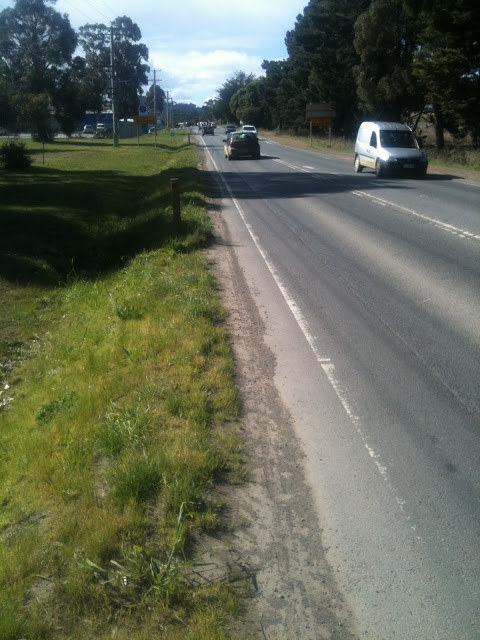 |
| 15. Serious Channel Highway, heading south Bike lane is far too narrow and not clear |
Along this stretch of road, the bike lane needs some attention. The dirt in the lane has narrowed it significantly, and this makes it the worst kind of bike lane: drivers expect you to ride in it, but there is not enough room to do so safely.
Overall, Kingborough is certainly heading in the right direction in terms of the scope of its bicycle infrastructure. I haven’t touched on the off-road cycle paths, but these are also becoming significantly more extensive. I’d love to see some of the disconnection issues above resolved — my biggest gripe with cycle infrastructure all over Australia is that it is all so disconnected. I leave you with a picture of how this feels to a cyclist.
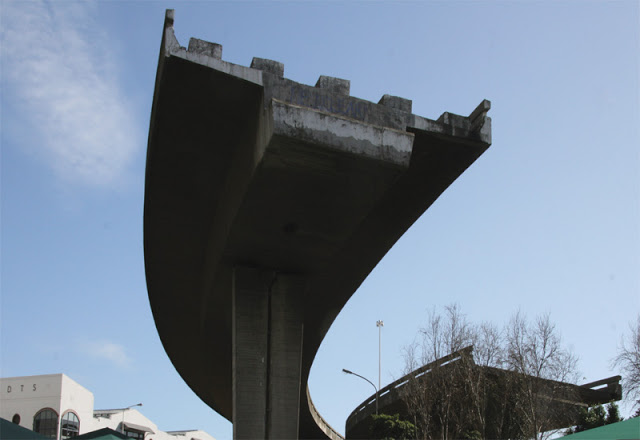 |
| Cape Town’s abandoned freeway, started many years ago and never finished. |


